new posts in all blogs
Viewing: Blog Posts Tagged with: Lockheed Martin, Most Recent at Top [Help]
Results 1 - 12 of 12
How to use this Page
You are viewing the most recent posts tagged with the words: Lockheed Martin in the JacketFlap blog reader. What is a tag? Think of a tag as a keyword or category label. Tags can both help you find posts on JacketFlap.com as well as provide an easy way for you to "remember" and classify posts for later recall. Try adding a tag yourself by clicking "Add a tag" below a post's header. Scroll down through the list of Recent Posts in the left column and click on a post title that sounds interesting. You can view all posts from a specific blog by clicking the Blog name in the right column, or you can click a 'More Posts from this Blog' link in any individual post.

By: Brian Minter,
on 12/2/2013
Blog:
First Book
(
Login to Add to MyJacketFlap)
JacketFlap tags:
Girls Inc. of Metropolitan Dallas,
Vicky Hernande,
West Dallas,
Books & Reading,
Education,
technology,
math,
science,
Book Recipients,
First Book,
engineering,
STEM,
Lockheed Martin,
First Book Partners,
Add a tag

One afternoon last week, a big box of books arrived in Miss Vicky’s classroom. After she explained to her students, who devote each Wednesday to studying science, technology, engineering and math (STEM), that the books were about “why things work and how they work”, the girls “shot up from their seats and ran over to the books.”
“Some of the younger girls didn’t understand all the words, but they kept reading,” she said. “Working hard to figure out what the book was about.”
Miss Vicky — known to the world outside her classroom as Vicky Hernandez — teaches girls, ages 6 to 18, at Girls Inc. of Metropolitan Dallas, and she strives to help them be strong, smart and bold.
![[INFOGRAPHIC] STEM Education Makes a Difference in Children’s Lives](http://blog.firstbook.org/wp-content/uploads/2013/12/infographic-promo-button.gif) Her students come from the surrounding West Dallas neighborhoods, an area known for high crime and struggling schools. Their parents have chosen to pay $5 every month so the girls can participate in tutoring and educational programming and receive a full, healthy meal each night after school at Girls Inc.
Her students come from the surrounding West Dallas neighborhoods, an area known for high crime and struggling schools. Their parents have chosen to pay $5 every month so the girls can participate in tutoring and educational programming and receive a full, healthy meal each night after school at Girls Inc.
Recently, Miss Vicky received a grant from First Book, made possible by our generous corporate partner, Lockheed Martin. “We had some books,” she said, “but not STEM [science, technology, engineering and math] books.”
Despite the lack of resources, STEM is central to the curriculum at Girls Inc. They believe studying STEM improves their students’ chances for successful college and career placement.
And they’re right. By 2018, there will be over 8 million STEM jobs in the United States, but only 5 million people qualified to fill them. Women in STEM careers also make more, with median annual earnings in selected STEM occupations nearly doubling that of women workers overall.
“STEM books are so valuable, because they teach specific concepts while helping the girls develop their reading skills,” Miss Vicky said. “It’s not just reading to read, it’s reading to grow a greater knowledge base.”
First Book is grateful to our friends at Lockheed Martin for making it possible for us to provide books about science, technology, engineering and math to students like Miss Vicky’s across the country.
The post How STEM Books Make a Difference to Girls in One Dallas Afterschool Program appeared first on First Book Blog.


By: Brian Minter,
on 11/21/2013
Blog:
First Book
(
Login to Add to MyJacketFlap)
JacketFlap tags:
Books & Reading,
Education,
technology,
math,
science,
First Book,
engineering,
STEM,
Lockheed Martin,
First Book Partners,
Add a tag
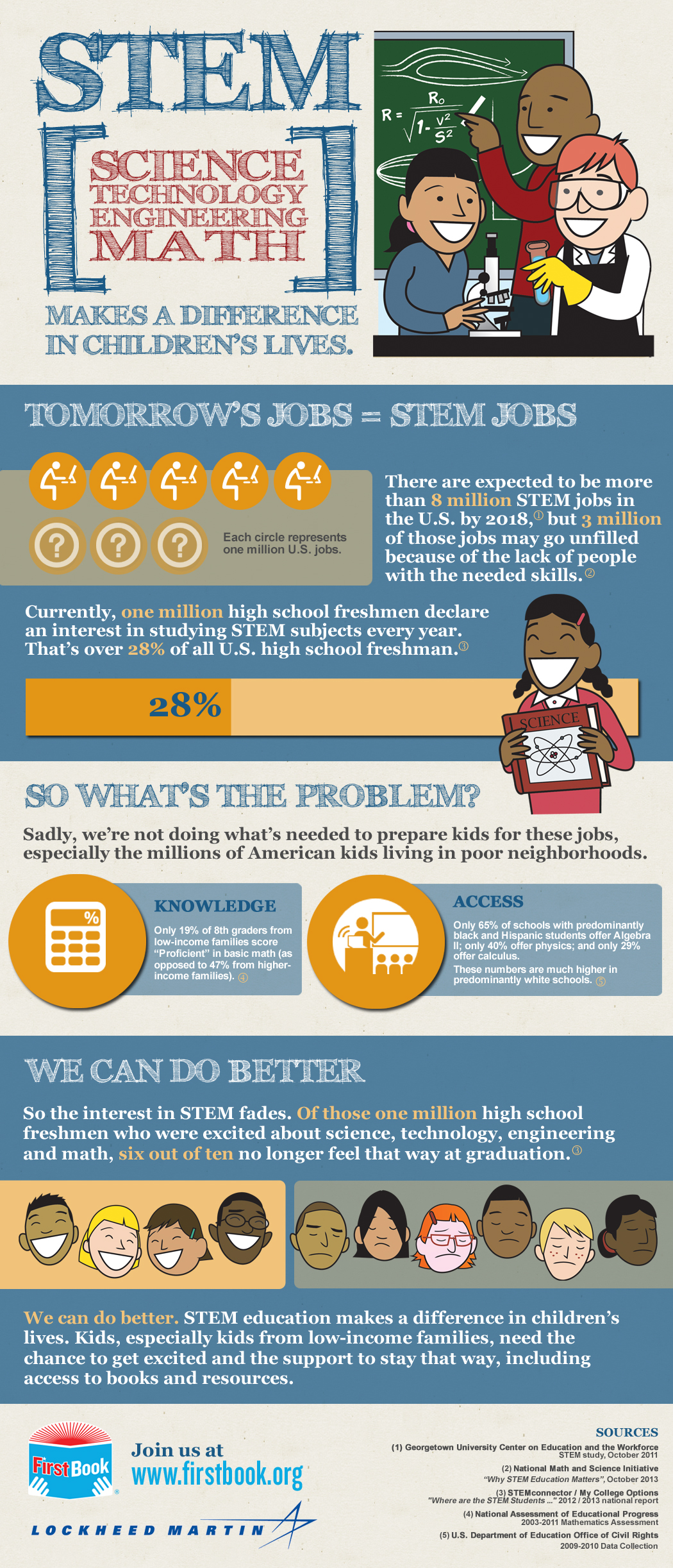
CLICK THE IMAGE TO SEE A BIGGER VERSION.
Thanks to partners like Lockheed Martin, First Book is helping thousands of kids in need get the books and resources they need. If you work with children from low-income families, sign up with First Book today to get brand-new, high-quality STEM books.
The post [INFOGRAPHIC] STEM Education Makes a Difference in Children’s Lives appeared first on First Book Blog.

During National Aerospace Week, First Book is sharing stories about science and engineering from some of our friends at Lockheed Martin, sponsors of First Book’s Springboard to STEM program. Today’s guest blogger is Ray Burick, Vice President of P-3 Programs and Greenville Operations, Lockheed Martin Aeronautics Company.
Airplanes. Space shuttles. Drones. Satellites. Space stations. Fighters. Cargo planes. Commercial jets. Stealth technology.
The aerospace industry is not only fascinating, but is also the very definition of cutting edge technology. Aerospace is challenging, innovative, progressive and dynamic. And, it impacts so many other industries. Just imagine how different our lives and world would be without contributions from the aerospace industry.
From a larger picture, the aerospace industry brings the world closer together ? literally ? with the products that it produces. It also ensures that the freedoms we value as a country are there for future generations.
From a career perspective, the aerospace industry offers growth and challenges to the people it employs. My first job involved installing engines into new aircraft designs. Today, I have the privilege of overseeing operations for one of the world’s most unique and vital aircraft ? the P-3 Orion.
Each job I’ve had as an aerospace engineer has come with a certain set of responsibilities. Not only has each role expanded my knowledge of an aircraft, it also enabled me to manage teams, budgets, logistics and operations in varying degrees. Everything I learned from working with a small team of engineers, I use every day in working with the entire P-3 team that includes more than 1,300 individuals.
Being a part of the aerospace industry offers you the chance to gain experience from day one on the job. You have access to a variety of jobs, from conceptual design to supporting aircraft on missions once they are delivered to the customer. I remind myself daily that not a lot of other industries have such a range of career opportunities like the ones found in the aerospace community.
I love my career. I wouldn’t change it for the world. My hope for the future of my industry is that today’s students are as amazed by the possibilities of working in aerospace as I am. If you want to literally help shape and design the future, check out what the aerospace industry can offer you. I can promise you that you’ll never run out of opportunities to literally shoot for the moon ? and beyond.


By: Brian Minter,
on 2/26/2011
Blog:
First Book
(
Login to Add to MyJacketFlap)
JacketFlap tags:
Lockheed Martin,
First Book Partners,
Advanced Development Program,
Brian Hershberger,
Palmdale,
Skunk Works,
First Book,
Guest Blog Posts,
STEM,
Add a tag
This week First Book is sharing stories about science and engineering from some of our friends at Lockheed Martin. Today’s guest blogger is Brian Hershberger, an aeronautic engineer with Lockheed Martin’s Advanced Development Programs (Skunk Works) in Palmdale, Calif.
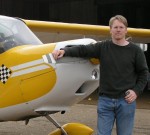
When I visit a school to discuss engineering I always ask the students, “What do engineers do?” The answer: Predict the future!
As an engineer at the Skunk Works in Lockheed Martin’s Aeronautics sector I have been fortunate to participate in multiple advanced development projects. We start with customer problems and apply physical principles – with a healthy dose of ingenuity – to create vehicle designs and predictions that solve those problems. The collaborative efforts of many skilled engineers go into every project we tackle and we depend on the efforts of teachers and parents to keep our country on the leading edge of innovation in technology and science.
My personal engineering journey started with aviation. I grew up around aircraft and have always been fascinated with flight. My brother and I used to “fly the couch” by rearranging the cushions into a tandem cockpit guided by Dad’s expired navigation charts. These experiences led to a broader fascination with how the world works; certainly in the duality of rigid rules (physics) and more flexible rules (communication and leadership) that frame all engineering challenges.
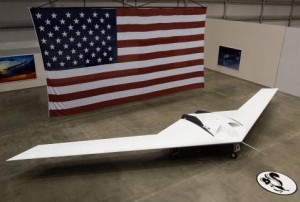
Teachers that inspired my engineering cognizance did so by connecting observations in the physical world to the underlying principles in engaging and thought-provoking demonstrations. In classroom visits supported by Lockheed Martin we strive to demonstrate simple, interactive examples that highlight engineering perspectives. Teamwork, communication, critical thinking and prediction of future events based on critical thinking are some of the topics we address.
A favorite demonstration involves raw eggs and a mouse trap. The question: “How does the egg break; when it first hits the trap or when the wire strikes the shell?” With the event caught on a high speed camera, and sometimes a bit of egg on my face, the result is always the former. Getting students excited about exploring their world and asking why, why, why, wherever their talents lie, is a responsibility we all share.
If you’re a student, what do you think of Brian’s job? What do you like (or dislike) about studying science and math in school?

This week First Book is sharing stories about science and engineering from some of our friends at Lockheed Martin. Today’s guest blogger is Sarah Brown, a systems engineer with Lockheed Martin in Syracuse, New York.

I was exposed to engineering from an early age because both my parents are software engineers. But I never really understood what an engineer did beyond sit at a computer.
My freshman year of high school, I joined the FIRST Robotics team at my high school because I thought robots sounded really cool. Little did I know I was about to go through an intense start-to-finish engineering design project. After six weeks of staying late after school sanding drive rods and coming in on weekends to debug our roller mechanism, we had a complete robot that could actually drive around and pick up soccer balls. At that moment, seeing our idea finally come to fruition, I knew I wanted to be an engineer when I grew up.
Now, nine years later, I’m a third-year ELDP working as a systems engineer on a ground-based radar program. While our design cycles are a little longer than the six weeks we had on the robotics team, I still love being an engineer. Every day brings with it a challenging new problem, whether it be designing a new algorithm, debugging a problem in the lab, or dealing with a requirements change from the customer.
I’m always amazed at the new and exciting applications we find for our technology. For example, here at MS2 in Syracuse we’ve applied the signal processing techniques we use to detect targets with radar and sonar to the Mine Communication System (MCS), which helps trapped miners communicate with the surface in case of emergency.
If you’re a student, what do you think of Sarah’s job? What do you like (or dislike) about studying science and math in school?


By: Brian Minter,
on 2/22/2011
Blog:
First Book
(
Login to Add to MyJacketFlap)
JacketFlap tags:
Marketplace,
First Book,
Air Force,
engineering,
STEM,
Lockheed Martin,
First Book Partners,
Jeff Marier,
Syracuse University,
University of Toledo,
Add a tag
This week First Book is sharing stories about science and engineering from some of our friends at Lockheed Martin. Today’s guest blogger is Jeff Marier, an aerospace engineer with Lockheed Martin in Syracuse, New York.
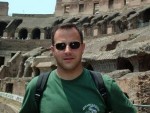
Looking for some adventure, I joined the Air Force right out of high school and got introduced to the engineering career field almost by accident when I was assigned as an electronic intelligence/radar technician. Fortunately, this turned out to be a very exciting field involving both cutting-edge technology and world-wide travel. Inspired by my superior officers, all of whom were electrical engineers, I chose, instead of reenlisting in the military, to pursue an electrical engineering degree from the University of Toledo (bachelor’s) and Syracuse University (master’s).
During my career at Lockheed Martin, my favorite part of my job has been developing very complex radar systems and delivering them all over the world. There is nothing more rewarding than to see your ideas go from the conceptual stages on paper to an actual system working on the top of a mountain somewhere around the world. The greatest inspiration for my work is that the systems we deliver typically have a direct impact on the security of those countries and our customers understand and appreciate that. Along with that, living in countries like Taiwan, Korea, Italy, Japan and Croatia for extended periods has allowed me to not only learn about many new cultures and places but has also gave me a greater appreciation of what we have here in the United States.
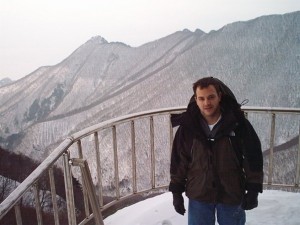 Engineering to me is essentially just creative problem solving. To help expose kids to the engineering career field, I visit many grade schools throughout the year and challenge student teams with open-ended projects that, given constraints on time and materials, encourage them to develop solutions by trial and error. Usually the most successful students tend to be the ones that have creative solutions and are willing to take risks by trying new things.
Engineering to me is essentially just creative problem solving. To help expose kids to the engineering career field, I visit many grade schools throughout the year and challenge student teams with open-ended projects that, given constraints on time and materials, encourage them to develop solutions by trial and error. Usually the most successful students tend to be the ones that have creative solutions and are willing to take risks by trying new things.
If you’re a student, what do you think of Jeff’s job? What do you like (or dislike) about studying science and math in school?


By: Brian Minter,
on 2/18/2011
Blog:
First Book
(
Login to Add to MyJacketFlap)
JacketFlap tags:
Engineers in the Classroom,
Lockheed Martin,
First Book Partners,
Chandler Arnold,
Marketplace,
technology,
math,
science,
First Book,
Guest Blog Posts,
engineering,
STEM,
First Book Marketplace,
Add a tag
Today’s blog post is by Chandler Arnold, First Book’s executive vice-president and director of the First Book Marketplace:
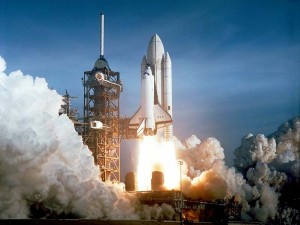
Not long ago, First Book introduced a Science, Technology, Engineering, and Math (STEM) section on the First Book Marketplace, our award-winning online bookstore for programs serving kids in need. This special STEM section is made possible through our partnership with Lockheed Martin, a world-renowned aerospace, security and technology company, and their K-12 education initiative, Engineers in the Classroom.
To celebrate this partnership, we’re going to feature some special guest posts on our blog next week from Lockheed Martin scientists and engineers. They’ll share a little bit about the cool things they do every day as part of their jobs – like planning missions to Mars or delivering radar systems to clients in faraway countries.
In today’s global, high-tech economy, students in the United States face competition from all corners of the world, and they need to master subjects like math, technology and engineering in order to become the rocket scientists, aerospace engineers and computer programmers of tomorrow. Books about these subjects can be hard to come by for schools and programs serving kids from low-income neighborhoods, but, thanks to Lockheed Martin’s generosity, First Book is able to provide them – now and for years to come.
Like our friends at Lockheed Martin, we want the kids we serve to have the opportunity to become astronauts, study volcanoes and build the next generation of computers. Making these books available to them is the first step.


By: Brian Minter,
on 1/6/2011
Blog:
First Book
(
Login to Add to MyJacketFlap)
JacketFlap tags:
Lockheed Martin,
Waiting for Superman,
First Book Partners,
Target Million Book Iniative,
Target Read With Me,
Cheerios Spoonfuls of Stories,
Mo Willems,
Advisory Boards,
Marketplace,
Authors & Illustrators,
Book Recipients,
First Book,
Book Distributions,
Reading Is Fundamental,
Eileen Spinelli,
Feeding America,
STEM,
First Book Marketplace,
volunteers,
bess the book bus,
Add a tag

2010 was a big year for First Book, and we couldn’t have done it without you. Thanks to our friends, fans, and generous supporters, we have a lot to celebrate.
Here are some of the cool things you helped make possible this past year:
We Reached the Milestone of 80 Million Books
At our annual Book Bash fund-raiser in New York City, we handed a basket of books to Round the Clock Nursery. One of the books in that basket was the 80 millionth book that First Book has distributed to kids in need since our founding in 1992.
We Shared the Stage With World Leaders
Kyle Zimmer, our president and co-founder, spoke at the World Economic Forum in Davos, Switzerland. Kyle discussed the impact and importance of the First Book Marketplace as a leading model for social entrepreneurship.
We Worked in Our Local Communities
Local First Book volunteer groups (known as Advisory Boards) in cities, towns and counties nationwide helped distribute $3 million worth of new books to kids in their communities.
We Teamed Up With ‘Reading is Fundamental’
First Book and Reading is Fundamental (RIF) joined forces to provide 600,000 new books to children in RIF programs across the country.
We Added New Books to Our Marketplace
We added lots of great new titles to our online Marketplace – including authors like Eric Carle, Jeff Kinney, Susan Meddaugh, Mo Willems and many others – so teachers and program leaders have even more choices.
We Got People to See Waiting for “Superman”
First Book was excited to kick off the pledge campaign as a promotional partner for this powerful documentary film.
We Released Special Editions
First Book continued one of our favorite traditions this year, releasing several new special editions, including Mo Willems’ Elephant & Piggie books and Eileen Spinelli’s ‘While You Are Away’.
We Distributed One Million Books With Target
To celebrate the launch of the ‘Read With Me’ campaign, Target helped us distribute one million new books to schools across the country. When a million people pledge to commit to read with a child, Target will provide another million books.
We Read a Lot of Short Stories
Volunteers from First Book’s local Advisory Boards read nearly 8,000 stories submitted through the Cheerios® New Author Contest in order to pick the top 25. That’s more than twice as many submissions as last year! (Check back in March to read the winning entry).
We Helped Kids Learn About Science and Math<
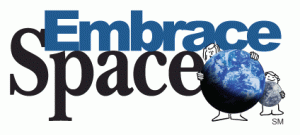 Since its launch in 1997, the Space Day educational initiative, which takes place on the first Friday of each May, has evolved into a massive grassroots effort dedicated to the extraordinary achievements, benefits and opportunities in the exploration and use of space.
Since its launch in 1997, the Space Day educational initiative, which takes place on the first Friday of each May, has evolved into a massive grassroots effort dedicated to the extraordinary achievements, benefits and opportunities in the exploration and use of space.
International in scope, the award-winning program involves hundreds of thousands of teachers and millions of students throughout the United States, and beyond. The ultimate goal is to promote math, science, technology and engineering education by nurturing young peoples’ enthusiasm for the wonders of the universe and inspiring them to continue the stellar work of today’s space explorers.
If you haven’t already planned an event for space day, no need to worry because you can celebrate space at any time. This weekend in Washington DC, thousands of kids, parents and museum goers will enjoy Space Day Family Day activities including presentations from the crew of STS-119 and three former astronauts, a live conversation with the crew of the International Space Station and loads of hands-on educational activities hosted by Lockheed Martin, NASA, and the National Air and Space Museum.
If you have students that are interested in space, look through the following space themed books on the First Book Marketplace and help students learn more about science, space innovations and amazing photography. Additional activities to help enhance learning include having a star party or visiting NASA’s website to see when the International Space Station may fly over your city. I was lucky enough to view the space station last week and although it goes by pretty quickly, it’s still cool to see!
Space Day and the Space Day logo are registered as service marks and should be used according to the guidelines provided by Lockheed Martin.


By: Guest Blogger,
on 2/23/2010
Blog:
First Book
(
Login to Add to MyJacketFlap)
JacketFlap tags:
technology,
math,
science,
Guest Blog Posts,
engineering,
STEM,
Lockheed Martin,
Science Technology Engineering Math,
Boy Scouts of America,
Explorer Scout Post,
K-MAX Unmanned Helicopter,
MATHCOUNTS,
Presidential Helicopter Program,
Science Olympiad,
Tom Mittan,
Add a tag
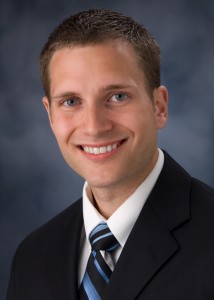 Hi, my name is Tom Mittan and I’m an engineer at Lockheed Martin in Owego, NY. I began my career working as a structural engineer on the Presidential Helicopter Program, and from there have moved onto the K-MAX Unmanned Helicopter program as a systems engineer and aircraft performance data analyst.
Hi, my name is Tom Mittan and I’m an engineer at Lockheed Martin in Owego, NY. I began my career working as a structural engineer on the Presidential Helicopter Program, and from there have moved onto the K-MAX Unmanned Helicopter program as a systems engineer and aircraft performance data analyst.
My first inspiration to learn more about engineering began when I entered high school and joined a Lockheed Martin-sponsored engineering Explorer Scout Post (a division of the Boy Scouts of America), here in Owego, in New York’s southern tier. The Explorer Scout Post focused on hands-on activities that engaged students in the design and construction of various projects such as radio transceivers, robots, and remote controlled airplanes. The projects were not only fun and engaging, but also offered valuable insight into the engineering process and a great opportunity to interact with real engineers and learn more about what they do.
In addition to the Lockheed Martin-sponsored Explorer activity, I was also exposed to science, technology and mathematics through secondary school programs such as Science Olympiad and MATHCOUNTS, as well as Technology Education classes (a branch of traditional Shop classes). These experiences, like those in Explorer scouting, greatly helped to augment the principles I learned in my science and math classes by offering lots of hands-on experience and a chance to work in a team environment on some very interesting projects.
Without fun and educational experiences like those offered in the programs above, it’s often difficult for students to picture anything beyond all the formulas and equations taught in their calculus or chemistry classes. With them, however, students are able to experience firsthand all the exciting possibilities these fields have to offer.


By: Guest Blogger,
on 2/19/2010
Blog:
First Book
(
Login to Add to MyJacketFlap)
JacketFlap tags:
technology,
math,
science,
Legos,
Guest Blog Posts,
engineering,
STEM,
Lockheed Martin,
Matt Grecco,
Software Engineer,
Add a tag
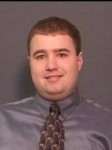 I’m Matt Grecco, Software Engineer at Lockheed Martin. I received a Bachelor’s Degree in Computer Science from the University of Notre Dame and a Master’s Degree in Statistical Sciences from George Mason University.
I’m Matt Grecco, Software Engineer at Lockheed Martin. I received a Bachelor’s Degree in Computer Science from the University of Notre Dame and a Master’s Degree in Statistical Sciences from George Mason University.
One of the best things about working as an engineer is the wide range of projects you can work on. I’ve done everything from troubleshooting a computer problem on the train platform at Grand Central Station in New York City, to giving a live demonstration of our equipment to a battalion of German soldiers in southern Germany.
Another thing I really enjoy about being an engineer is the sense of accomplishment you gain when you get a breakthrough after spending days on a problem you just can’t seem to figure out. That feeling you get when the “light bulb” goes off in your head is truly unique. It gives you the satisfaction that coming up empty so many times really pays off in the end.
I’ve always been a problem solver and have always liked methodically putting things together. I grew up loving ™, which is usually the start every engineer gets. The same basic engineering principles involved in building fun Lego trucks and structures, are used daily in my work as an engineer allowing me to continue solving difficult problems.


By: Guest Blogger,
on 2/15/2010
Blog:
First Book
(
Login to Add to MyJacketFlap)
JacketFlap tags:
technology,
math,
science,
robotics,
medicine,
Guest Blog Posts,
engineering,
STEM,
nanotechnology,
Lockheed Martin,
aerospace,
biotechnology,
climatology,
Dr. Ray Johnson,
green energy,
October 10-24 2010,
Science Expo,
USA Science and Engineering Festival,
Add a tag
 Hello, I am Dr. Ray Johnson, the Chief Technology Officer for the Lockheed Martin Corporation.
Hello, I am Dr. Ray Johnson, the Chief Technology Officer for the Lockheed Martin Corporation.
I have a great job that allows me and the 70,000 Lockheed Martin scientists and engineers to explore and discover the wonders of science. We engineer solutions and use new technologies to protect people and improve their lives, and we constantly look for new and exciting ways to be innovative.
Technical careers rely on an educational foundation in science, technology, engineering, and math (STEM). My colleagues and I also rely on these technical disciplines. We are deeply concerned about the shortage of scientists and engineers here in the U.S. and about the need to reinvigorate future generations to pursue technical careers. We recognize the importance of these areas of study, and through our company’s support, we are involved in a number of initiatives to encourage students to get involved in STEM-related activities.
One initiative Lockheed Martin supports, and that I am greatly excited about, is the upcoming USA Science and Engineering Festival that will be held in Washington, D.C. from October 10-24, 2010. As the Festival Host, we hope to have a million people participate; the best part—it’s free. The event culminates with a two-day Science Expo on the National Mall featuring more than 1,000 exhibits spanning an incredible array of technical fields: aerospace, green energy, medicine, biotechnology, climatology, robotics, nanotechnology, and so many more.
The Festival will be an incredible experience for any student. We hope to inspire the next generation of scientists and engineers to invest in their future and America’s future by studying science, technology, engineering, and math at their schools.


![[INFOGRAPHIC] STEM Education Makes a Difference in Children’s Lives](http://blog.firstbook.org/wp-content/uploads/2013/12/infographic-promo-button.gif) Her students come from the surrounding West Dallas neighborhoods, an area known for high crime and struggling schools. Their parents have chosen to pay $5 every month so the girls can participate in tutoring and educational programming and receive a full, healthy meal each night after school at Girls Inc.
Her students come from the surrounding West Dallas neighborhoods, an area known for high crime and struggling schools. Their parents have chosen to pay $5 every month so the girls can participate in tutoring and educational programming and receive a full, healthy meal each night after school at Girls Inc.













